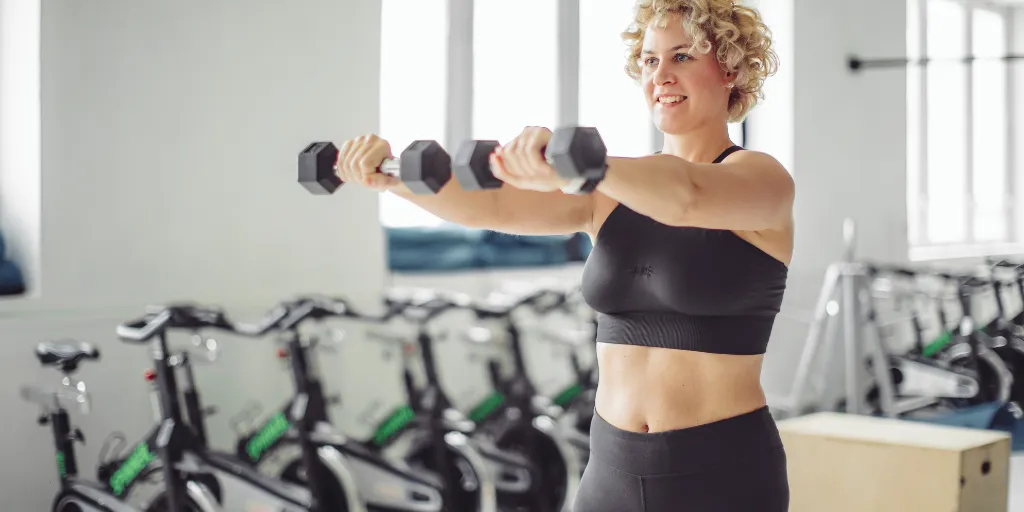
Start Moving & Stop Hurting: The Midlife Guide to Pain-Free Strength
You can’t see what pain feels like.
You might walk beside a friend who’s quietly wincing with every step, or pass a woman in the store whose smile hides the stiffness in her back. She looks fine — maybe even strong — but behind that calm exterior, her body is begging for relief.
Maybe that woman is you.
You know you “should” exercise, but the thought of it just feels… exhausting.
Because when everything aches — your knees, your hips, your back — the idea of moving more feels counterintuitive.
You’re not lazy. You’re just unsure where to start.
We’ve all heard the phrase “movement is medicine.”
But when pain sets in, most women stop moving, not because they don’t care, but because they don’t want to make it worse.
And that makes perfect sense. You’ve been told to “just keep moving,” but never how.
You weren’t taught what kind of movement heals vs. what kind hurts, or how to tell the difference.
That’s where I come in.
When I first became a personal trainer almost 25 years ago, my certification said I was qualified to help healthy people.
But it didn’t take long to realize… almost no one walks in completely pain-free.
So I decided that “basic certification” would be just my starting point.
Over the last two decades, I’ve studied anatomy, neuromuscular pathways, biomechanics, breath, and fascia — diving deep into how the body moves and heals.
Now, as a health and movement coach, I’ve woven it all together into my signature framework: The 6 Pillars of Wellness — and a self-paced course that teaches women 50+ how to restore stability, rebuild strength, and move without pain again.
Because here’s the truth: your body isn’t broken.
It’s just asking for the right input.
You are one body with many parts and when one area tightens or compensates, everything else feels it.
That’s why you might notice stiffness in your neck that somehow leads to tension in your lower back or knees. It’s all connected.
When you sit for long periods or move in the same repetitive patterns, your fascia — the connective tissue that surrounds every muscle and joint — can become “dehydrated.”
That’s what creates that stuck, achy, heavy feeling.
But when you learn to move your parts separately, rehydrate fascia, and retrain your timing, you can relieve stiffness, increase mobility, and reclaim ease in your body again.
I often use the analogy that your body is like a symphony. The strings, percussion and horns don’t play separately, when they play in perfect harmony they make beautiful music. This is true of our body as well.
Here’s one small shift you can start with today:
Reconnect with your pelvis.
Sitting for hours each day can “turn off” your power muscles. So when you stand up to walk or exercise, your body doesn’t know which muscles to recruit — creating pain and imbalance.
Simply learning to move your pelvis without engaging your hips or upper body can start to relieve that constant ache in your lower back.
It’s simple, it’s subtle — and it’s the kind of work that changes everything.
Inside my 6 Pillars of Wellness coaching, we go beyond “workouts.”
We focus on:
Restoring movement patterns that reduce pain
Strength moves that build stability and confidence
Nutrition that reduces inflammation
Sleep and stress relief that support recovery
Mindset that retrains the mind to move beyond old stories and patterns that quietly feed pain, stress, and self-doubt, replacing them with awareness, trust, and possibility.
And The MELT Method® + NeuroStrength® techniques (I’m a Level 5 Instructor — the highest certification level) to rehydrate fascia and bring your body back into alignment
The recipe isn’t complicated.
It just requires consistency, curiosity, and the willingness to take ownership of your body again.
When you do, something incredible happens, you stop feeling like your body is working against you and start realizing how powerful it can be when you understand it.
I don’t see movement as punishment.
I see it as a gift, one that allows me to relieve pain, stay strong, and live with vitality and freedom.
And I want the same for you.
If you’re tired of guessing what your body needs and ready to finally understand how to move, fuel, and recover in a way that supports healing — I’d love to help.
👉 Apply here for a 15-minute call
We’ll talk through what’s going on in your body and see which of my programs would best support your goals.
This is your time to stop managing pain — and start creating strength, stability, and ease in your second act.
Because your body isn’t the problem.
It’s the pathway.